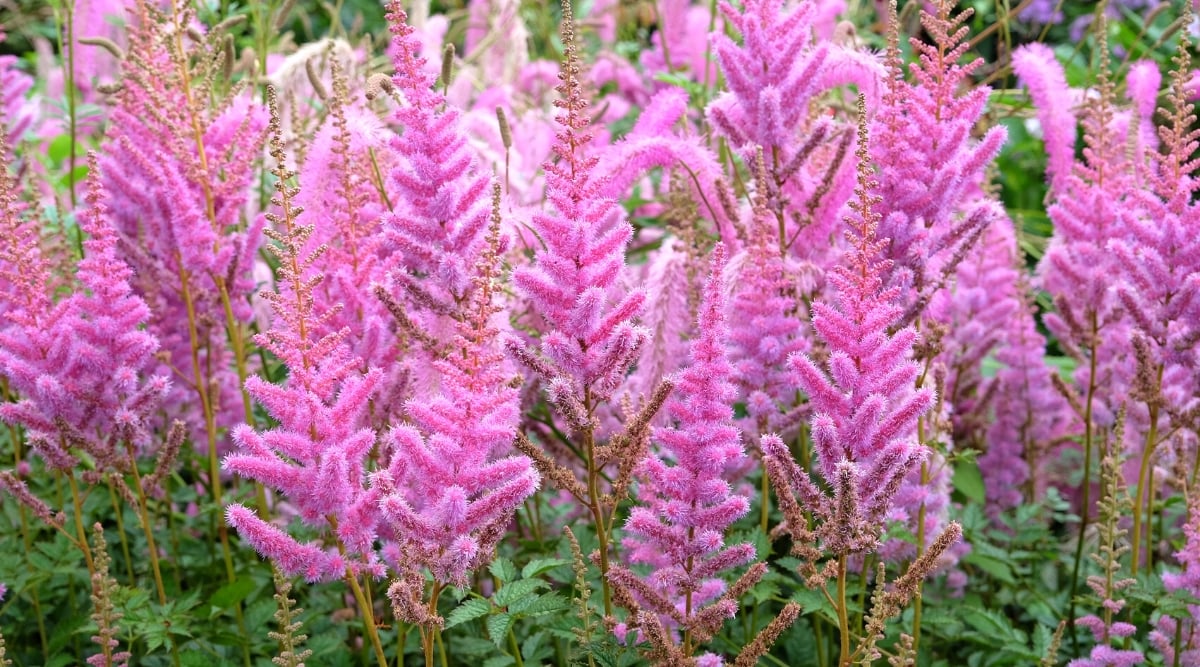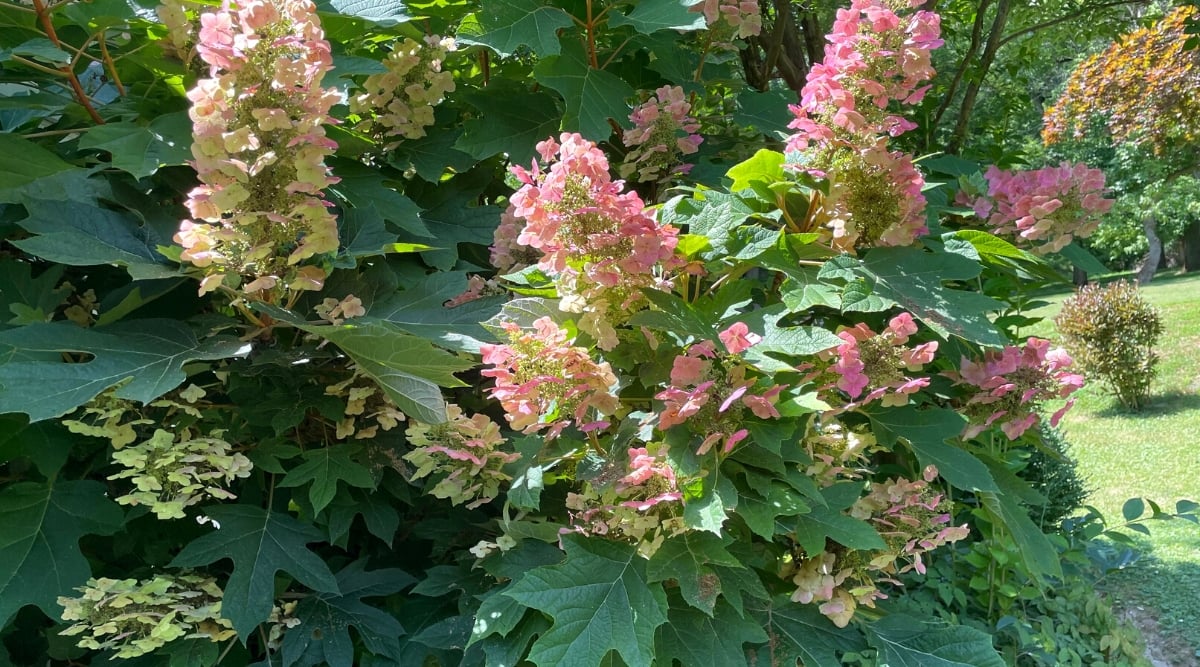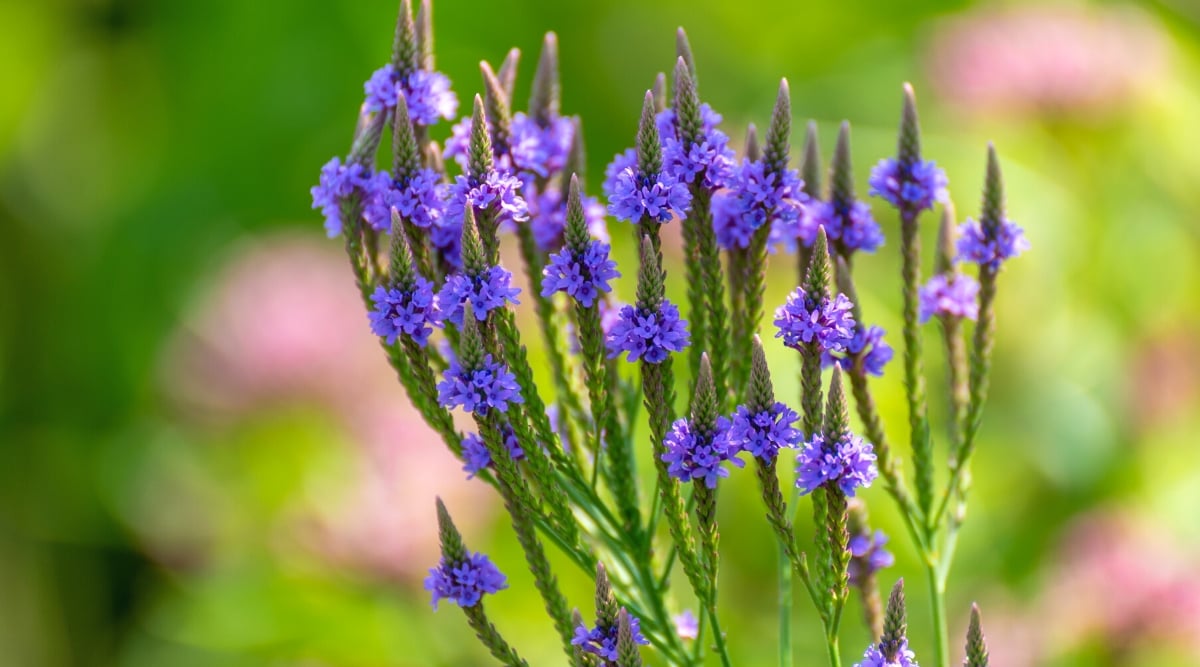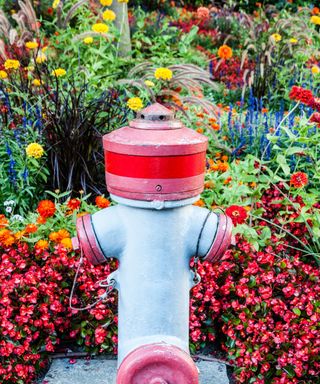If you don’t have plans this weekend, there is no better way to spend it than out in the garden. Say goodbye to summer and welcome in the fall by planting a few perennials for Labor Day that will bring joy to your backyard season after season.
In celebration of the day, we’re recommending perennials native to North America. Put on your gardening gloves and get your hands dirty!
Black-Eyed Susan
This flower is loved for its vibrant petals.
A native wildflower garden staple, black-eyed Susan (Rudbeckia hirta) is a favorite among many American gardeners. Its sunny yellow petals, surrounding a dark center, make it a standout in any garden. Cultivars like ‘Cherokee Sunset’ offer a wider range of warm colors to brighten up your backyard.
Known for its heat and drought tolerance, black-eyed Susan easily attracts masses of butterflies and birds. It’s an essential addition to fall pollinator gardens. Its drought-resistant nature also means that it requires less watering, making it both waterwise and beginner-friendly.
Planting black-eyed Susan on Labor Day allows it to establish strong roots before winter. This ensures it will bloom prolifically the following summer. It may be a short-lived perennial, but the brightness of these stunning flowers makes it well worth planting.
Purple Coneflower
 Its resilience to various conditions and low-maintenance nature make it an ideal addition to vibrant and buzzing gardens.
Its resilience to various conditions and low-maintenance nature make it an ideal addition to vibrant and buzzing gardens.
Purple coneflower (Echinacea purpurea) is another pollinator magnet native to the United States. Despite the purple in the common name, a few colorful cultivars like ‘Paradiso’ or muted tones like ‘White Swan’ are suitable for any garden aesthetic.
This perennial is incredibly reliable, so much so that you can plant it and forget about it. Along with the pollinator attracting benefits, purple coneflower is also known for its medicinal properties, adding to its versatility.
No matter what you throw at coneflowers, they remain resilient. They can handle heat, drought, and poor soil, continuing to flower and attract a buzz of activity to your garden.
Coreopsis
 This cheerful perennial is an excellent Labor Day choice with its long bloom time and adaptability to various soils.
This cheerful perennial is an excellent Labor Day choice with its long bloom time and adaptability to various soils.
Coreopsis is also known as tickseed after the small round seeds that look just like ticks. These plants produce bright and cheerful daisy-like flowers in various colors, with yellow being particularly popular.
Although some coreopsis are grown as annuals, there are also perennial types that make wonderful staples in US gardens. Coreopsis lanceolata is a sunny wildflower that produces masses of yellow flowers in the months across spring and summer.
Coreopsis has a long bloom time and can thrive in many different soil types. You can’t go wrong planting it this Labor Day!
Astilbe
 This plant is admired for its plumes in various shades, offers color in partial shade, and fills perennial beds with lush foliage.
This plant is admired for its plumes in various shades, offers color in partial shade, and fills perennial beds with lush foliage.
Astilbe is appreciated for its feathery pink, red, and white plumes. Their ability to grow in partial shade is also ideal for adding a pop of color where other perennials often struggle.
Even when it’s not in flower in late spring and early summer, the lush foliage is also great for filling space in perennial beds. Its ability to thrive in damp soils makes it great for low-lying garden areas that can be tough to fill.
Planting astilbe on Labor Day gives the roots a head start in development, ensuring its plumes dazzle the following season.
Blue False Indigo
 This native wildflower has tall spikes of pea-like blue flowers, bringing low-maintenance and vibrant blue color.
This native wildflower has tall spikes of pea-like blue flowers, bringing low-maintenance and vibrant blue color.
Blue false indigo (Baptisia australis) is another native wildflower hailing from eastern North America. Known for its tall spikes of pea-like blue flowers, the blooms easily stand out amongst other perennials.
Despite its intricate look, Baptisia australis is incredibly low-maintenance. It provides a striking blue hue to gardens that can be tough to find elsewhere. Its impressive height is great for covering unsightly garden objects or filling gaps, supported by a drought-tolerant deep root system.
Blue false indigo grows best in full sun but can also tolerate some partial shade. Planting as fall approaches helps establish the deep roots for the strongest possible flowering later on.
Lupine
 Known for its tall and colorful spikes, this plant offers native varieties and attracts pollinators.
Known for its tall and colorful spikes, this plant offers native varieties and attracts pollinators.
Recognizable by its tall spikes of colorful and stately flowers, lupine is a great addition to US gardens. Several species are native to North America and well-accustomed to many growing conditions.
The stunning flowers attract pollinators, especially when planted en masse or in a pollinator bed filled with similar perennials. If the tall flowers don’t quite fit in your garden design, there are also dwarf varieties like ‘Pixie Delight’ that are better for urban spaces.
As lupine prefers cooler temperatures to establish and doesn’t appreciate heat, Labor Day is the perfect time for planting, promising a colorful carpet come spring.
Butterfly Milkweed
 This colorful plant has vibrant orange or yellow blooms, attracting butterflies and bees.
This colorful plant has vibrant orange or yellow blooms, attracting butterflies and bees.
Butterfly milkweed (Asclepias tuberosa) is known for its vibrant orange or yellow blooms, made even more colorful and lively by the butterflies and bees it attracts.
Not only is it beautiful, but it’s also vital for monarch butterflies, serving as both a food source and a host plant for caterpillars. It’s also remarkably waterwise, ideal for regions with limited rain or water saving.
If you need a burst of color and life in your garden during the warmer months, the cooler temperatures of late summer and early fall are the perfect time to plant.
Creeping Phlox
 This ground cover perennial offers spring color.
This ground cover perennial offers spring color.
For something a little different from your average bedding perennial, Creeping Phlox (Phlox stolonifera) is an excellent ground cover to fill open spaces with beautiful flowers in spring. The dense growth forms a carpet of color that is an ideal replacement for grasses or open beds.
This perennial has the ability to suppress weeds, prevent soil erosion, and flourish even in rocky or sandy soils. Its starry flowers come in a range of stunning colors to suit any gardener’s needs.
Creeping phlox is usually planted in spring but can also be planted on Labor Day in areas with milder climates. As long as the soil is well-draining, you shouldn’t have trouble growing this native.
Oakleaf Hydrangea
 A great hedge or background plant, it’s suitable for fall planting to establish roots before spring, promising a striking summer display.
A great hedge or background plant, it’s suitable for fall planting to establish roots before spring, promising a striking summer display.
Synonymous with the southeastern United States, the oakleaf hydrangea (Hydrangea quercifolia) is a native hydrangea species that stands out with its distinct foliage and large cone-shaped flower clusters.
Besides its showy summer blooms, the foliage also has ornamental value throughout fall, turning eye-catching shades of red, orange, and purple. Their large stature makes a beautiful hedge or background plant in beds, and the blooms are ideal for cutting and bringing indoors – especially the classic white varieties.
Fall is an ideal time to plant any hydrangea species, including oakleaf. This gives the roots time to settle in before temperatures increase in spring, increasing your chances of a stunning summer display.
Columbine
 This plant attracts hummingbirds and butterflies, is deer-resistant, and is easy to grow.
This plant attracts hummingbirds and butterflies, is deer-resistant, and is easy to grow.
Columbine (Aquilegia) is a perennial native to meadows and woodlands worldwide. Aquilegia canadensis is a species native to North America, making it suitable for planting across much of the continent.
Attracting hummingbirds and butterflies with its nectar-rich flowers, columbine is also deer-resistant and easy to grow. The native species produce red flowers, but there are so many other types to choose from that are all well-suited to perennial gardens.
Labor Day is a great time to plant columbine. The better established the roots are early on, the better the flowers you’ll see the following spring.
Virginia Bluebells
 This native plant boasts charming blue bell-shaped flowers that attract pollinators.
This native plant boasts charming blue bell-shaped flowers that attract pollinators.
Virginia bluebells (Mertensia virginica) are adorable native plants found in woodlands across North America. At the turn of spring, they delight gardeners and their garden visitors with soft blue, bell-shaped flowers.
Virginia bluebells are among the first flowers to pop up in early spring and also the first flowers available to attract pollinators, from buzzing bees to beautiful butterflies.
If you want to reap the benefits of these early spring flowers, Labor Day weekend is the best time to plant.
Pink Muhly Grass
 This ornamental grass fits into perennial beds, offering striking pink-purple fall blooms above foliage.
This ornamental grass fits into perennial beds, offering striking pink-purple fall blooms above foliage.
To move away from traditional perennials, Pink Muhly Grass (Muhlenbergia capillaris) is an ornamental grass that fits perfectly into perennial beds. This grass is celebrated for its ethereal pink-purple blooms that appear in fall and hang above the foliage like a gentle glow or haze of color.
This ornamental grass is drought-resistant and rabbit and deer-resistant, giving little trouble to gardeners. It’s ideal for spots that often receive a gentle breeze, creating impressive movement and texture in landscapes.
Plant this grass in full sun and well-draining soil for the best possible performance. It also tolerates sandy or poor-quality soils if you have a tough gap to fill.
Vervain
 This blue vervain features dense clusters of attractive flowers that attract butterflies and pollinators in summer.
This blue vervain features dense clusters of attractive flowers that attract butterflies and pollinators in summer.
Blue vervain (Verbena hastata) is a species native to large parts of the United States, like many entries on this list.
Known for its adorable densely-packed flowers that bloom in clusters, it’s a beacon for butterflies and other pollinators in summer. Vervain can grow up to six feet in height, but there are also shorter species to choose from that are better suited to small spaces.
Coral Bells
 Heuchera showcases colorful foliage and bell-shaped flowers.
Heuchera showcases colorful foliage and bell-shaped flowers.
Coral Bells (Heuchera) are known for their foliage that adds a pop of color when other plants are not in flower. The leaves range in color from burgundy to lime green and peach, complemented by delicate bell-shaped flowers.
These perennials are versatile, thriving in shady areas where it can be tough to inject color. They are ideal edging plants and can even be used to cover empty spots as tall groundcovers.
Labor Day is the best time to plant coral bells, allowing them to establish through fall. They’ll also be a great color replacement when other colorful plants die down at the end of summer.
Beeblossom
 This beautiful plant has butterfly-like flowers.
This beautiful plant has butterfly-like flowers.
Gaura lindheimeri is commonly known as bee blossom. The flowers attract butterflies (and other pollinators) and look like butterflies themselves, giving them their other common name – whirling butterflies.
The plant’s unique white and pink flowers stand tall and sway beautifully in the wind. It’s also drought-tolerant, making it an ideal choice for waterwise gardens.
Beeblossom benefits from the cooler temperatures of Labor Day, allowing it to establish its roots without the stress of summer heat and ensuring a mass of butterfly-inspired flowers the next season.
Final Thoughts
The best way to spend your Labor Day is out in the garden. Use the day to get a head start on fall planting, reaping the benefits of planting perennials season after season!




